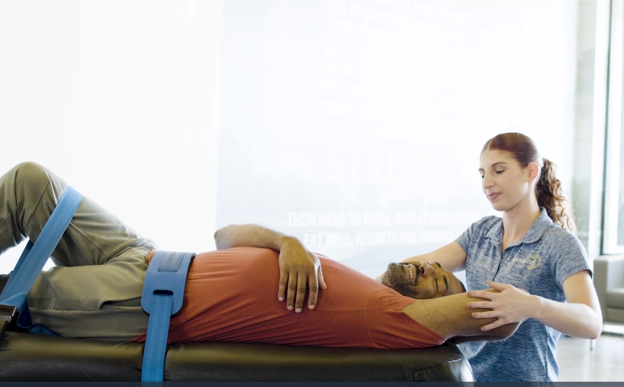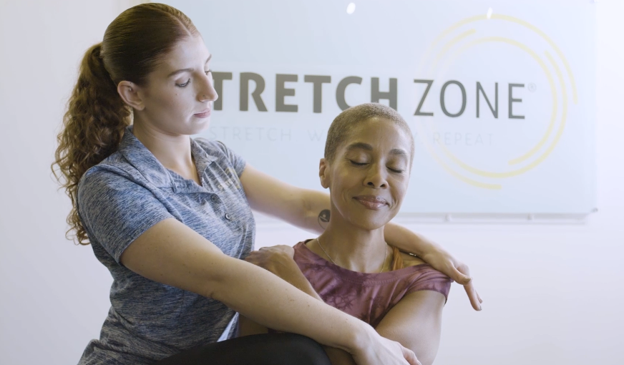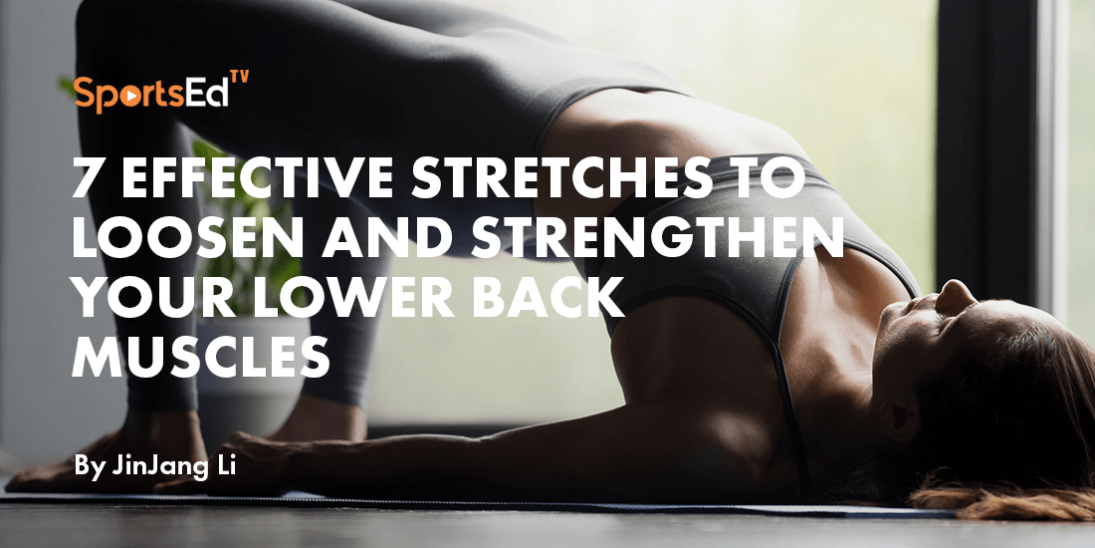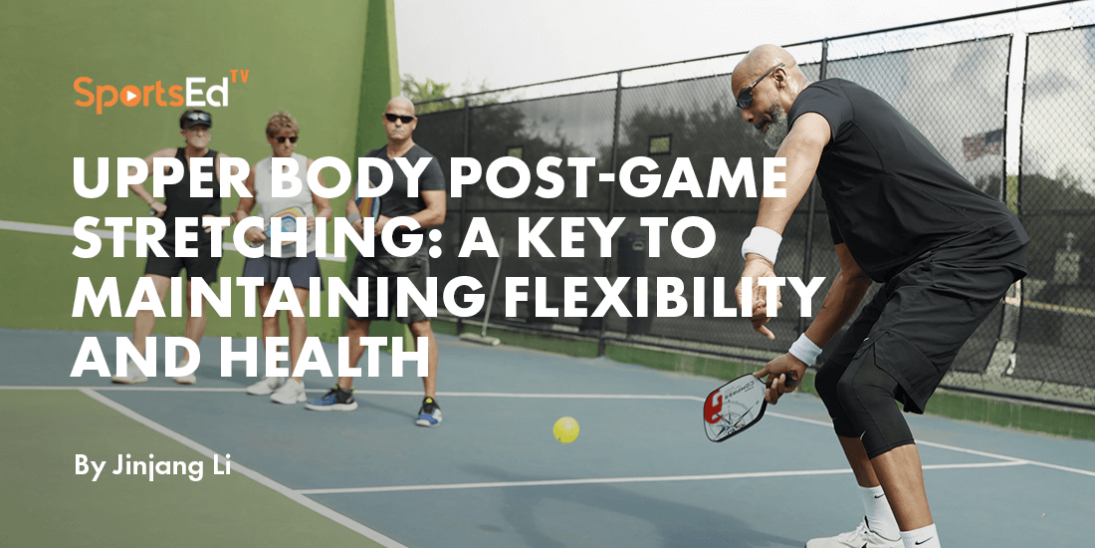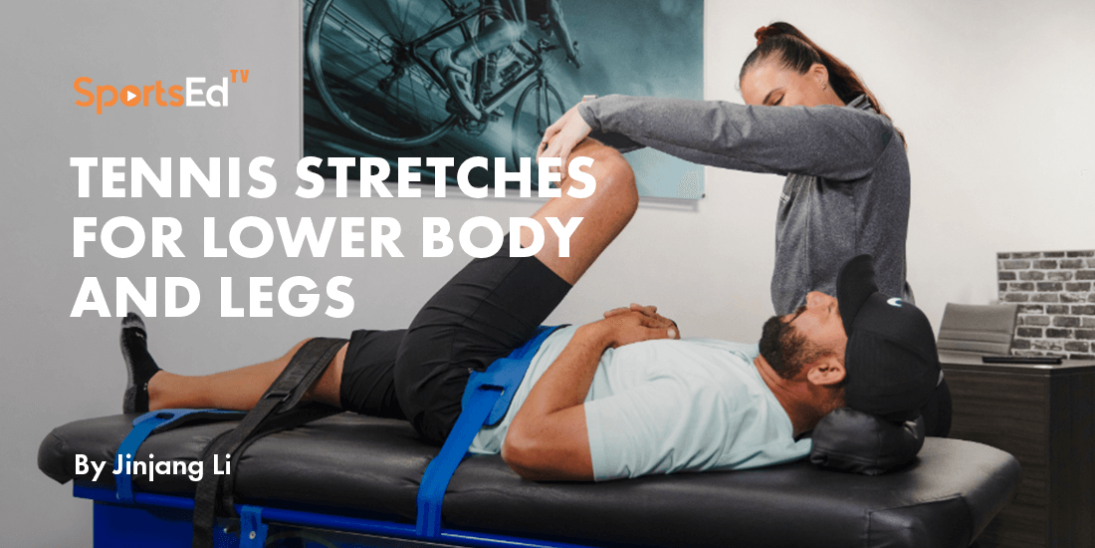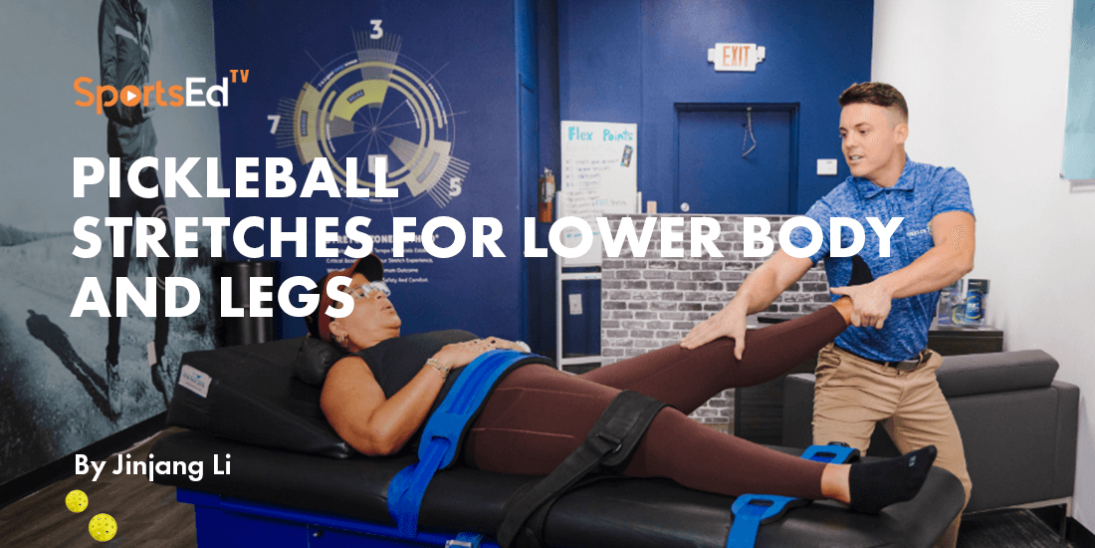Health, Stretching, Tennis
Welcome and thanks for visiting...

Tennis Stretches for Upper Body and Arms
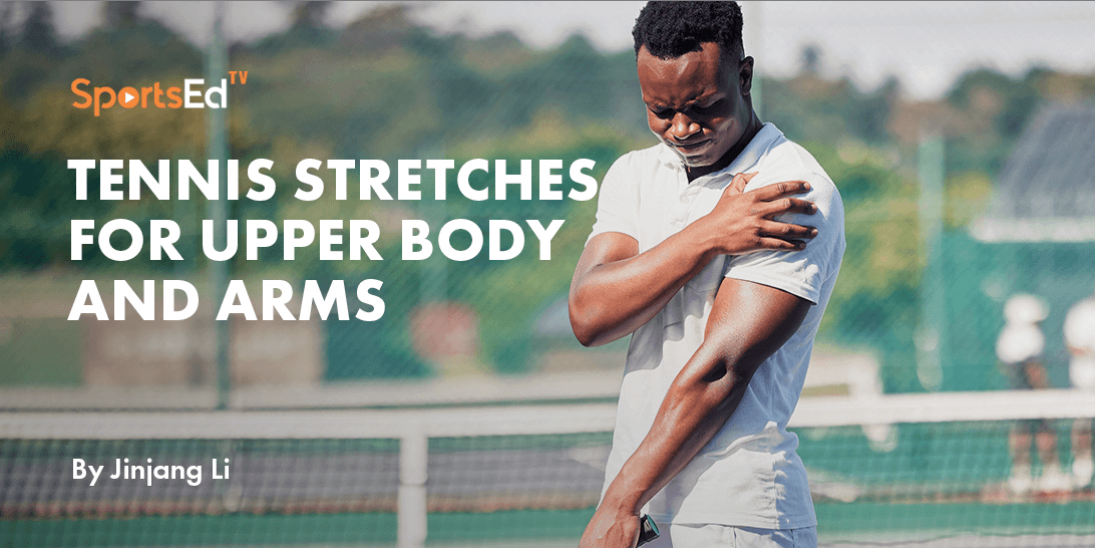
Static stretches are primarily used post-workout or after a tennis match to diminish the discomfort experienced the next day. Another merit of static stretching is its ability to enhance flexibility or joint range of motion (ROM). A functional ROM is crucial for optimal body movement and energy transfer. This is vital for tennis athletes as peak performance is reached when one is in prime health and can efficiently channel energy for powerful strokes.
For optimal energy channeling, your joints need to be well-aligned. Any structural imbalances can lead to energy dissipation at the joints. Consider the analogy of constructing a building: the walls should be uniform in height and length for stability. Similarly, your body's musculature and connective tissues keep everything in place. If there's an imbalance, like one side being less flexible, it can throw everything off-kilter.
A study published on PubMed examined the flexibility measurements of junior elite tennis players compared to athletes from other disciplines. The findings revealed that tennis players exhibited distinctive flexibility profiles, with tighter sit and reach flexibility and variations in shoulder rotations. These differences underscore the musculoskeletal adaptations unique to the rigorous demands of tennis. Consequently, this study emphasizes the importance of well-designed, tennis-specific static stretches. Such targeted stretching routines can optimize performance for these young elite tennis players.
Upper Body and Shoulder Stretches
Front Deltoid Stretch
This stretch zeroes in on the deltoids, targeting the anterior shoulder muscles. Its benefits include injury prevention and aiding in the recovery process. Thus, it's commonly incorporated into post-match or post-workout stretching routines.
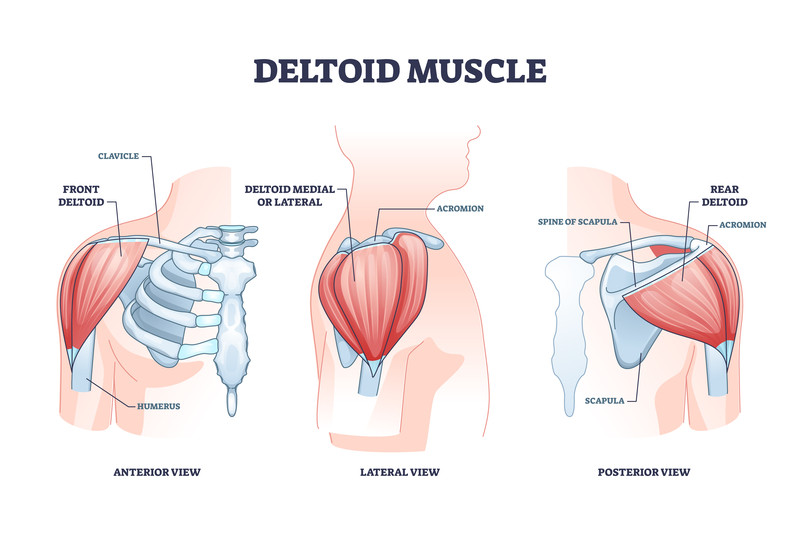
Rear Deltoid Stretch
Aimed at the posterior shoulder muscles, this stretch is pivotal in sidestepping shoulder injuries. Incorporate it into your routine, especially after intense forehand sessions, to bolster muscle recovery and injury prevention.
Pectoralis Stretch
This stretch targets the muscles in the front of the chest and can address postural imbalances in the shoulder. Overexertion activities, like bench pressing or pushups, often lead to tight pecs in tennis players. Consistent use of this stretch post-workout can rectify a forward shoulder tilt.
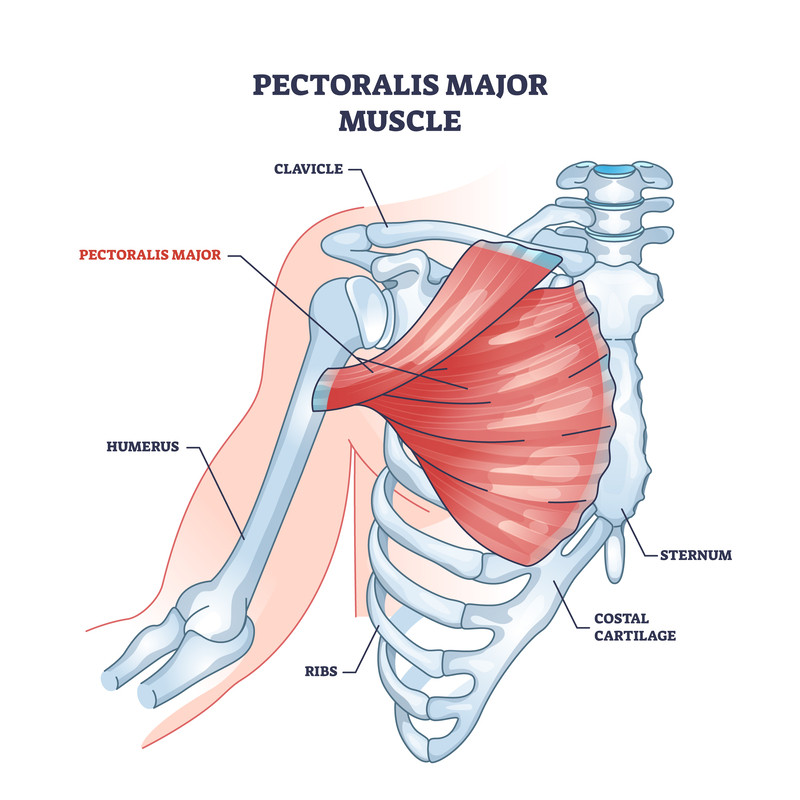
Latissimus Dorsi Stretch
This stretch emphasizes the back and posterior shoulder muscles. A tight latissimus dorsi can inhibit shoulder mobility. Integrate this into your routine to tackle postural irregularities and boost muscle recovery after heavy upper-body exercises.
Internal Rotators Stretch
This is a go-to for tennis players, targeting the frequently overworked internal shoulder rotators. Regular usage can rectify shoulder postural issues and aid muscle recovery. The forward tilt in the dominant shoulder of many players is due to the imbalance between internal and external rotator strength, largely because internal rotators play a significant role in powerful stroke generation.
Rotator Cuff Stretch
Focused on the rotator cuff and surrounding muscles, this stretch is essential for reducing the risk of shoulder injuries, especially after intense serving or overhead play.
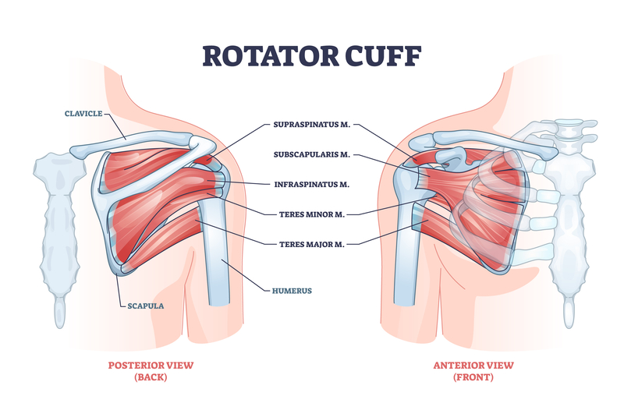
Stretching Arms and Wrists
Overhead Triceps Stretch
It is essential for flexibility and injury prevention, especially after extensive serving or backhand slices. Given the frequent involvement of the triceps in stroke generation, it's a vital addition to your routine.
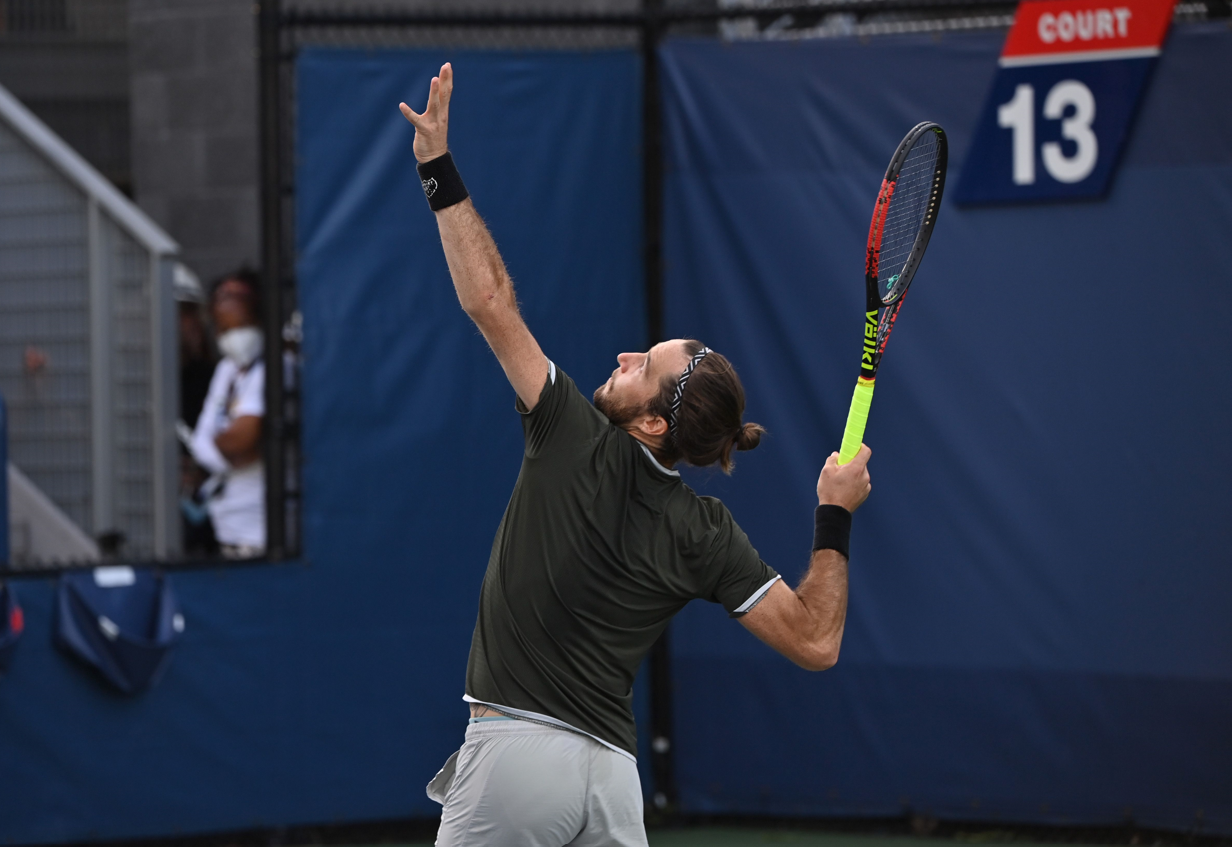
Forearm Flexor Stretch
This stretch aids the wrist flexors and should be done routinely to mitigate wrist injury risks. Players might face persistent wrist issues due to overuse, particularly during serves or forehand play. Thus, integrating this stretch can aid muscle recovery and reduce subsequent soreness.
Forearm Extensor Stretch
This targets the wrist extensors and is instrumental in countering wrist discomfort. Imbalances or overuse during groundstroke topspin plays or serves might cause pain, making this stretch crucial post-training to prevent issues like ganglion cysts and expedite recovery.
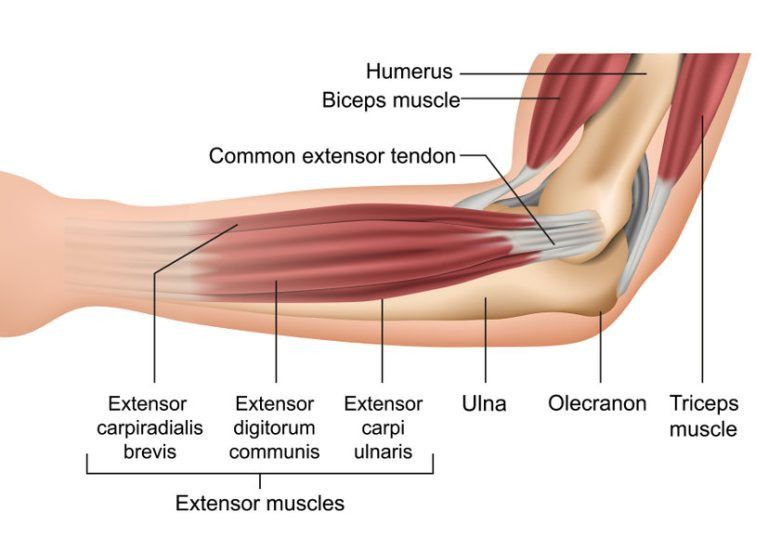
When should you do static stretching?
It's not common practice to employ static stretches as a warm-up for tennis. The reason? Static stretching can decrease muscle tension, potentially leading to diminished force production. Put simply, static stretching might dampen your agility on the court. Reserve this for post-workout or match.
In the tennis world, the value of professional guidance cannot be overstated. When these stretches are administered by professional stretching practitioners, such as those at Stretch Zone, the benefits are amplified manifold. These practitioners possess an in-depth understanding of muscle anatomy, body mechanics, and individualized stretching needs. Their hands-on approach ensures not just the correct execution of each stretch but also a targeted focus on specific muscles and problem areas. By entrusting one's recovery and flexibility training to such professionals, tennis players stand to gain enhanced mobility, reduced injury risks, and a greater assurance of maintaining peak physical form. In essence, while stretches in themselves are invaluable, under the guidance of seasoned practitioners, they become game-changers in a player's holistic well-being and performance journey.


